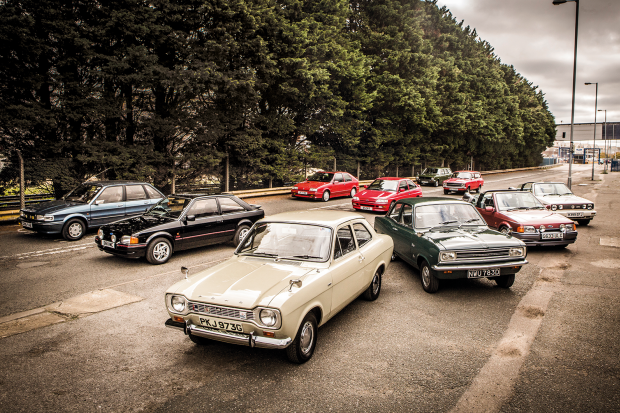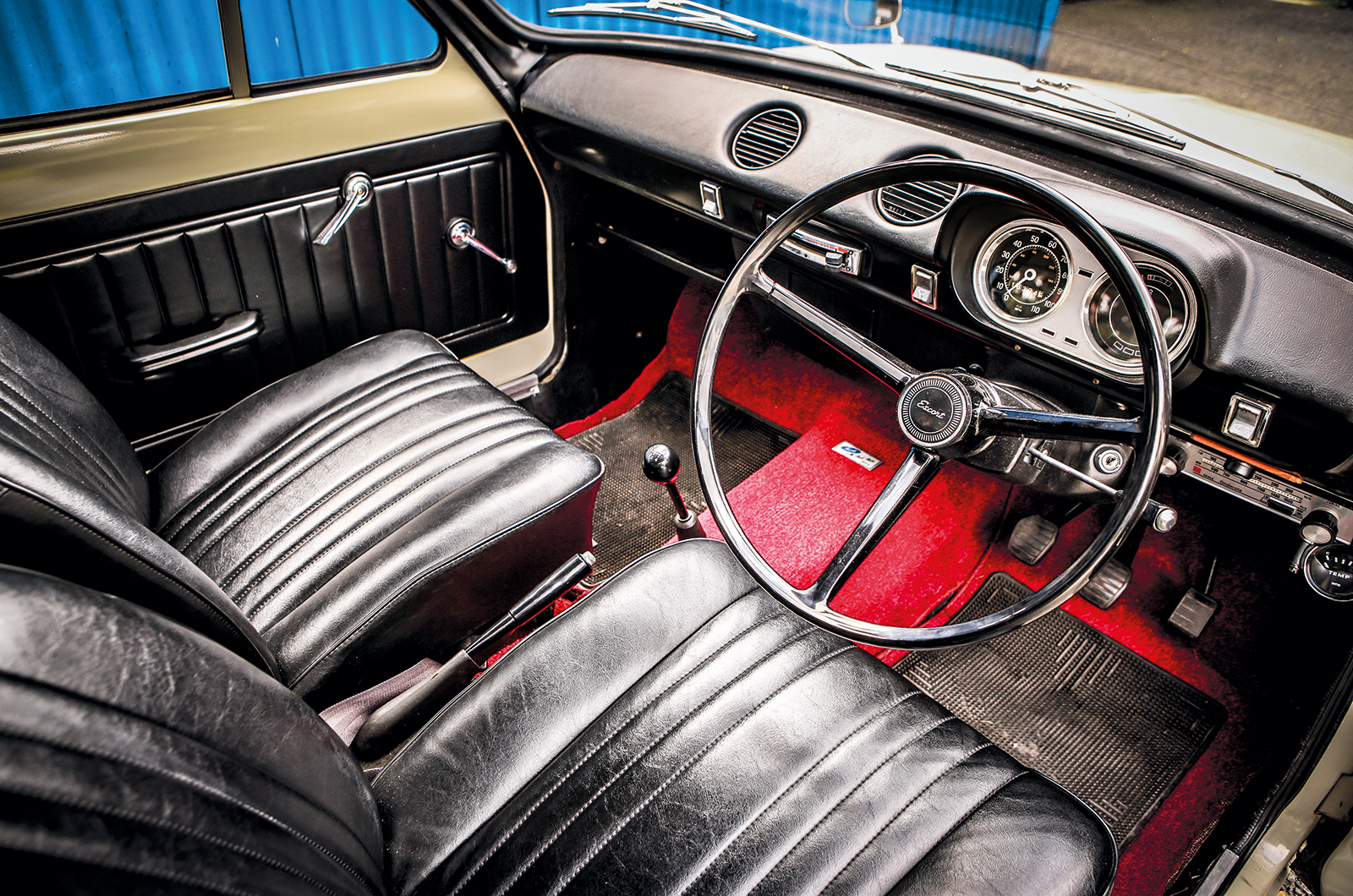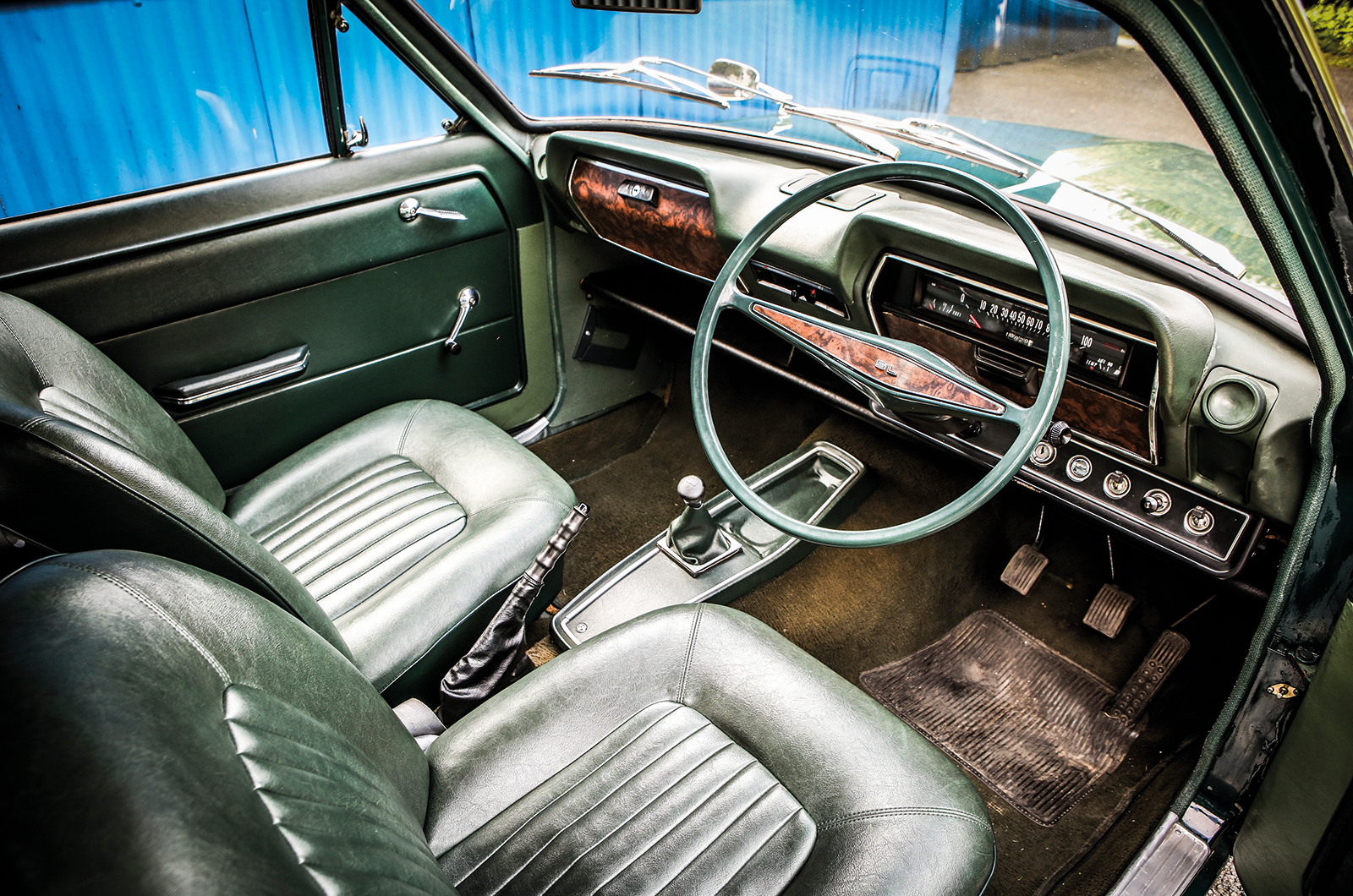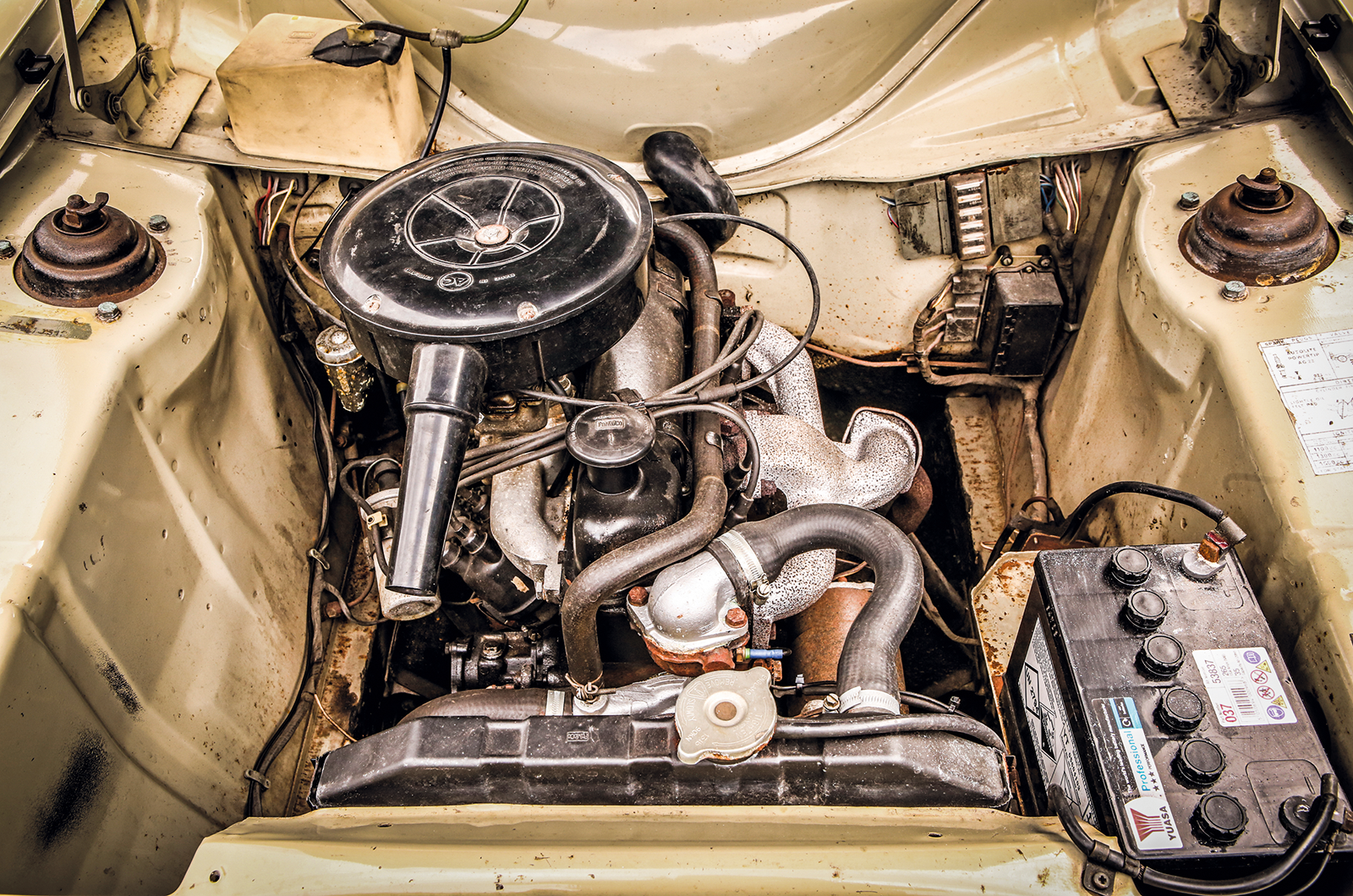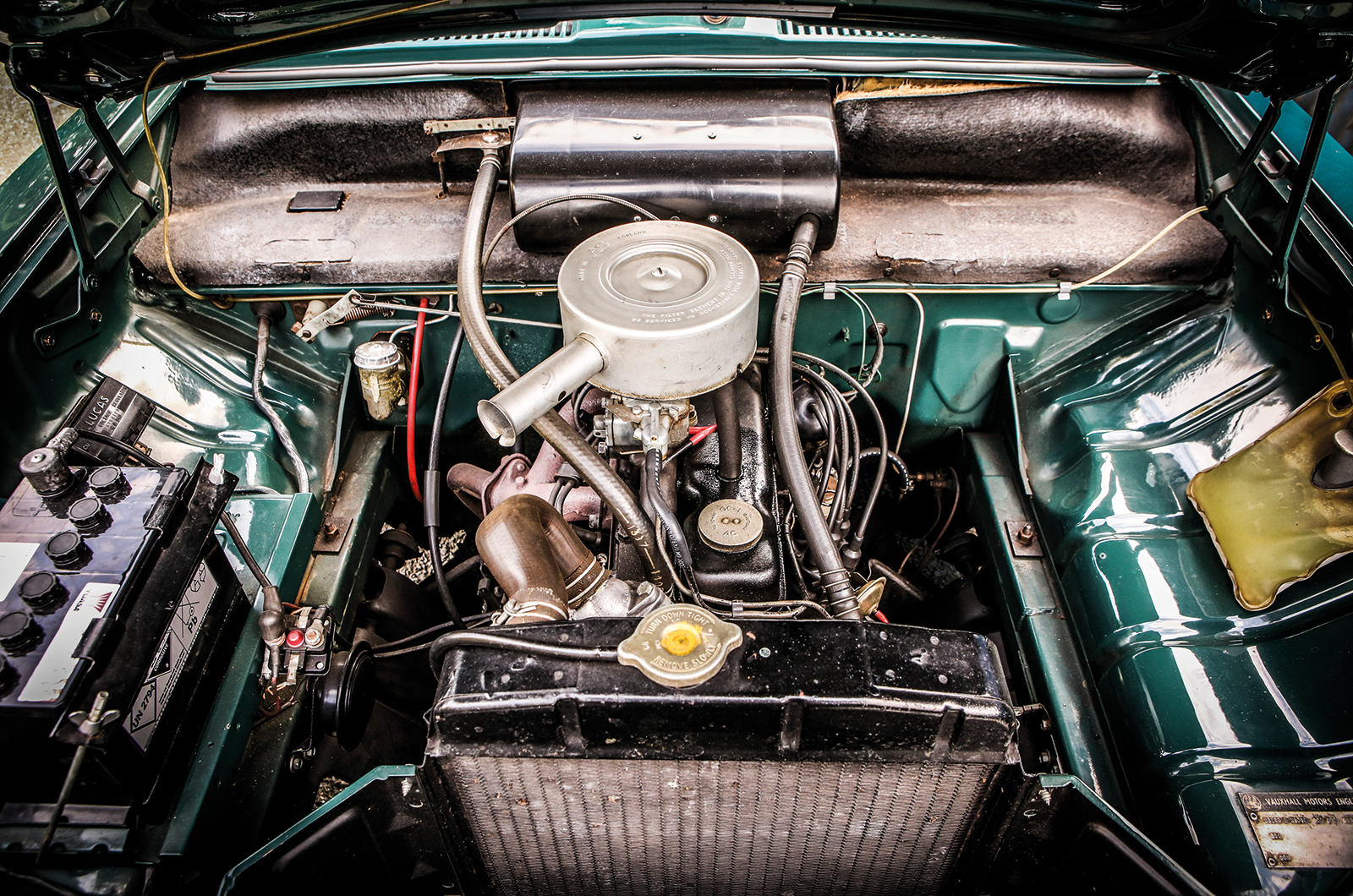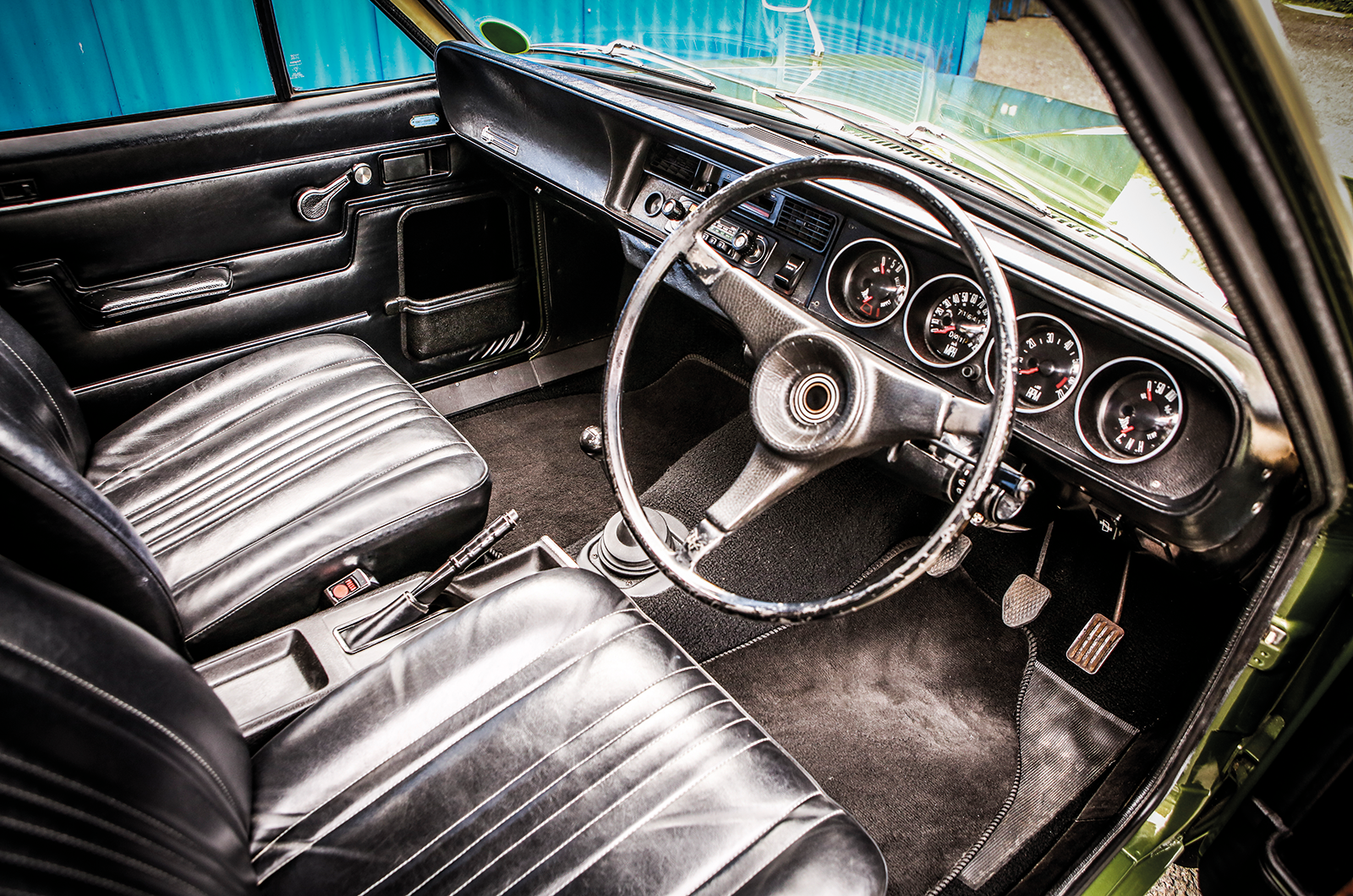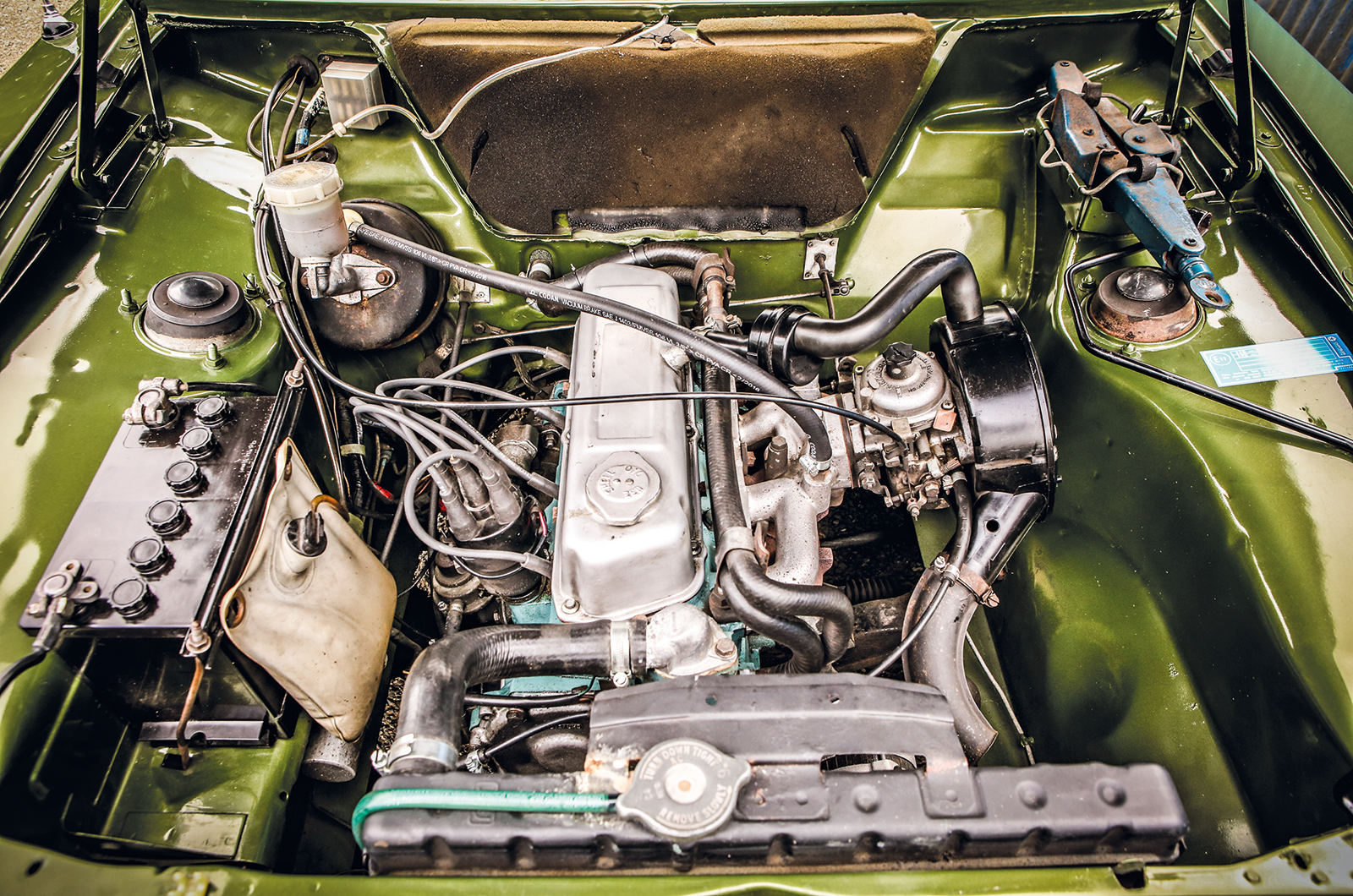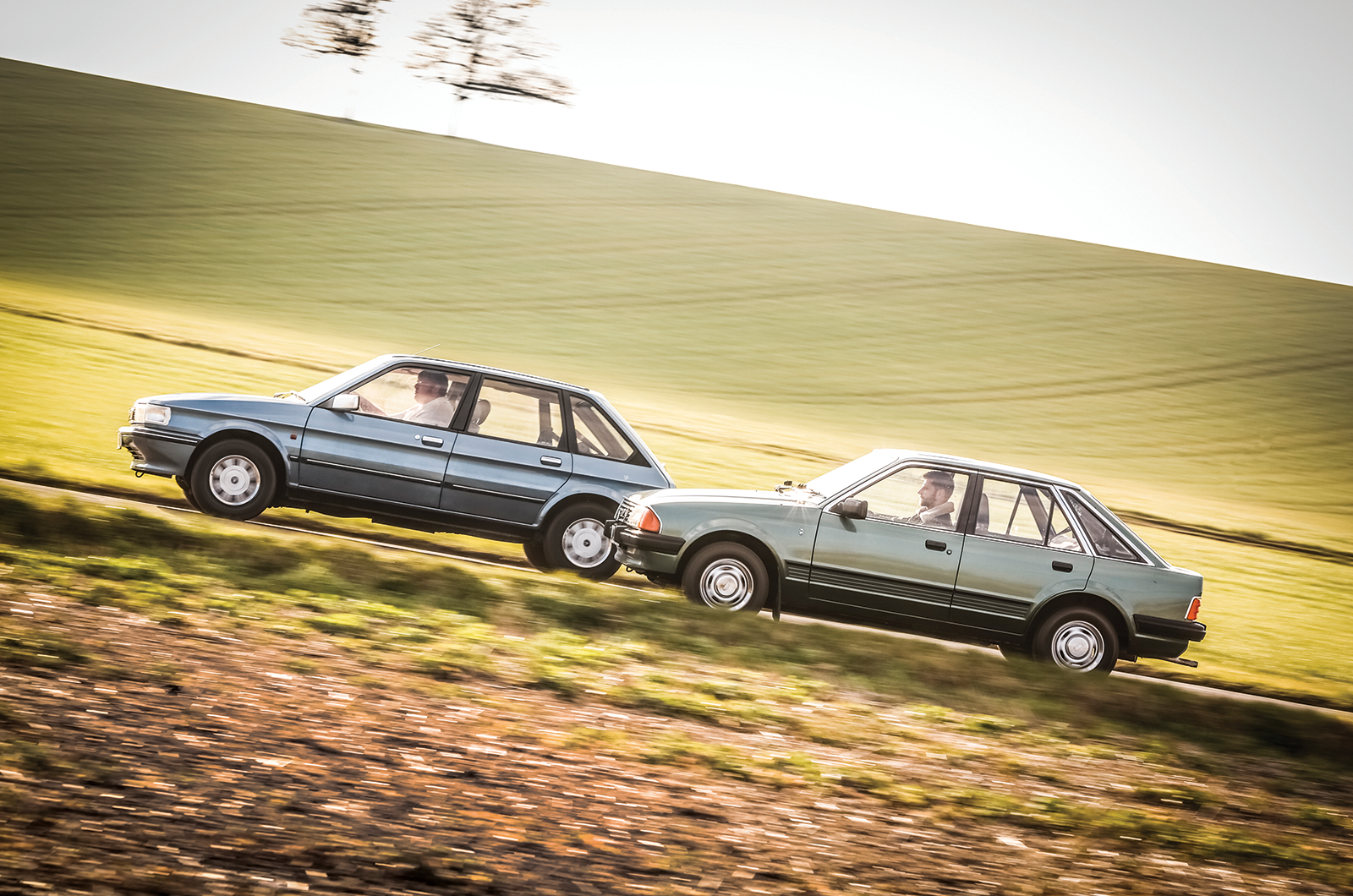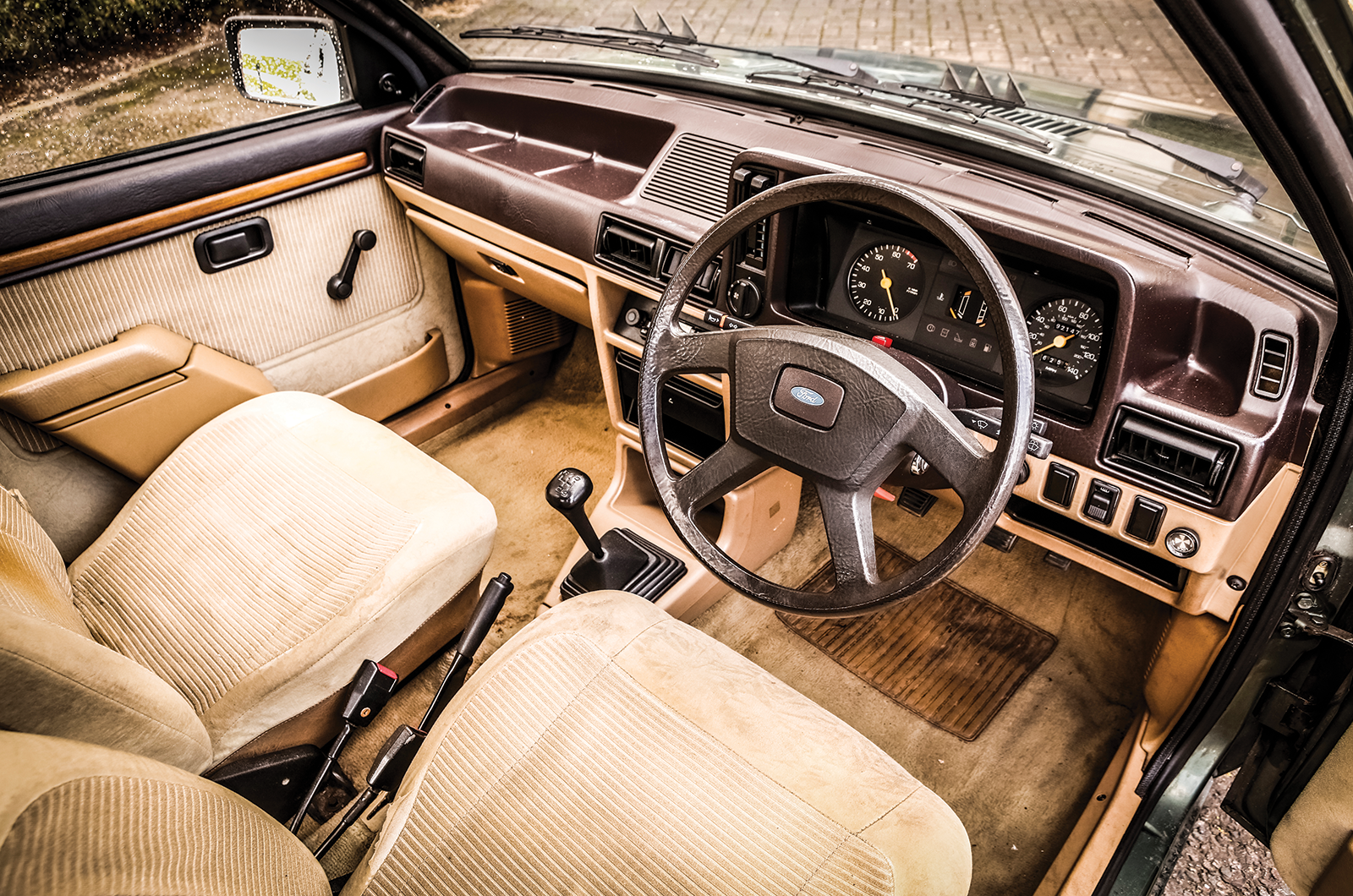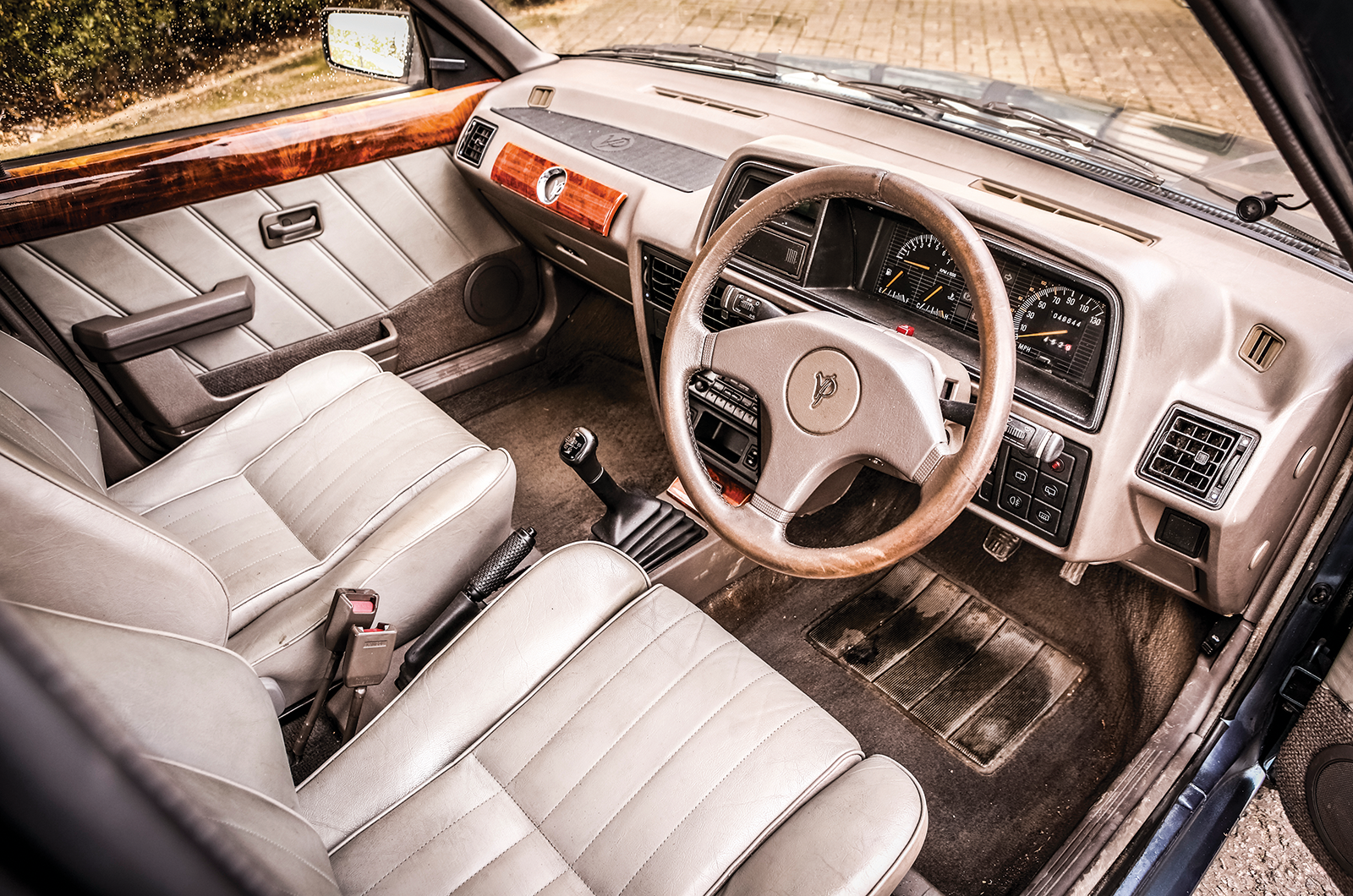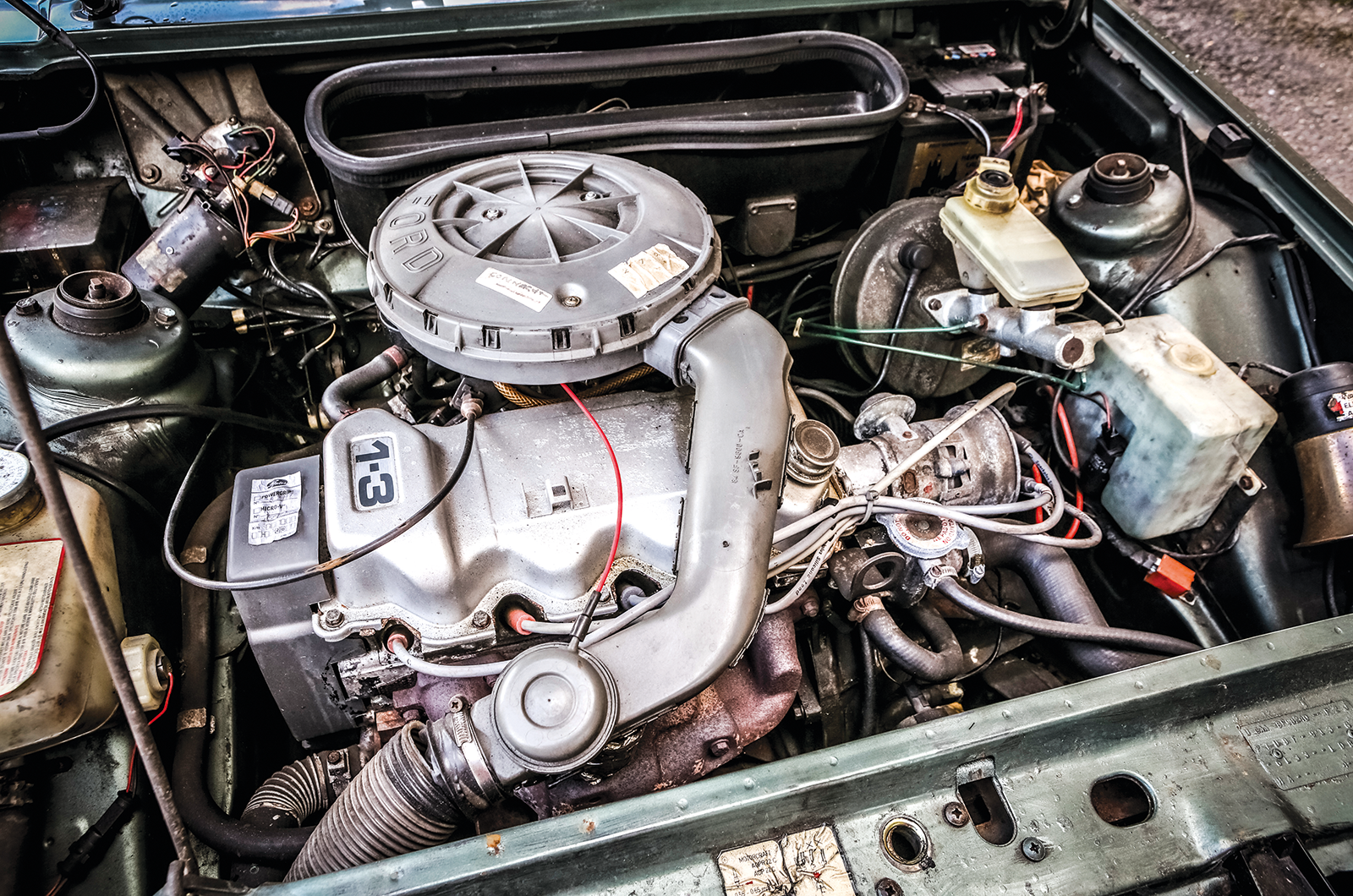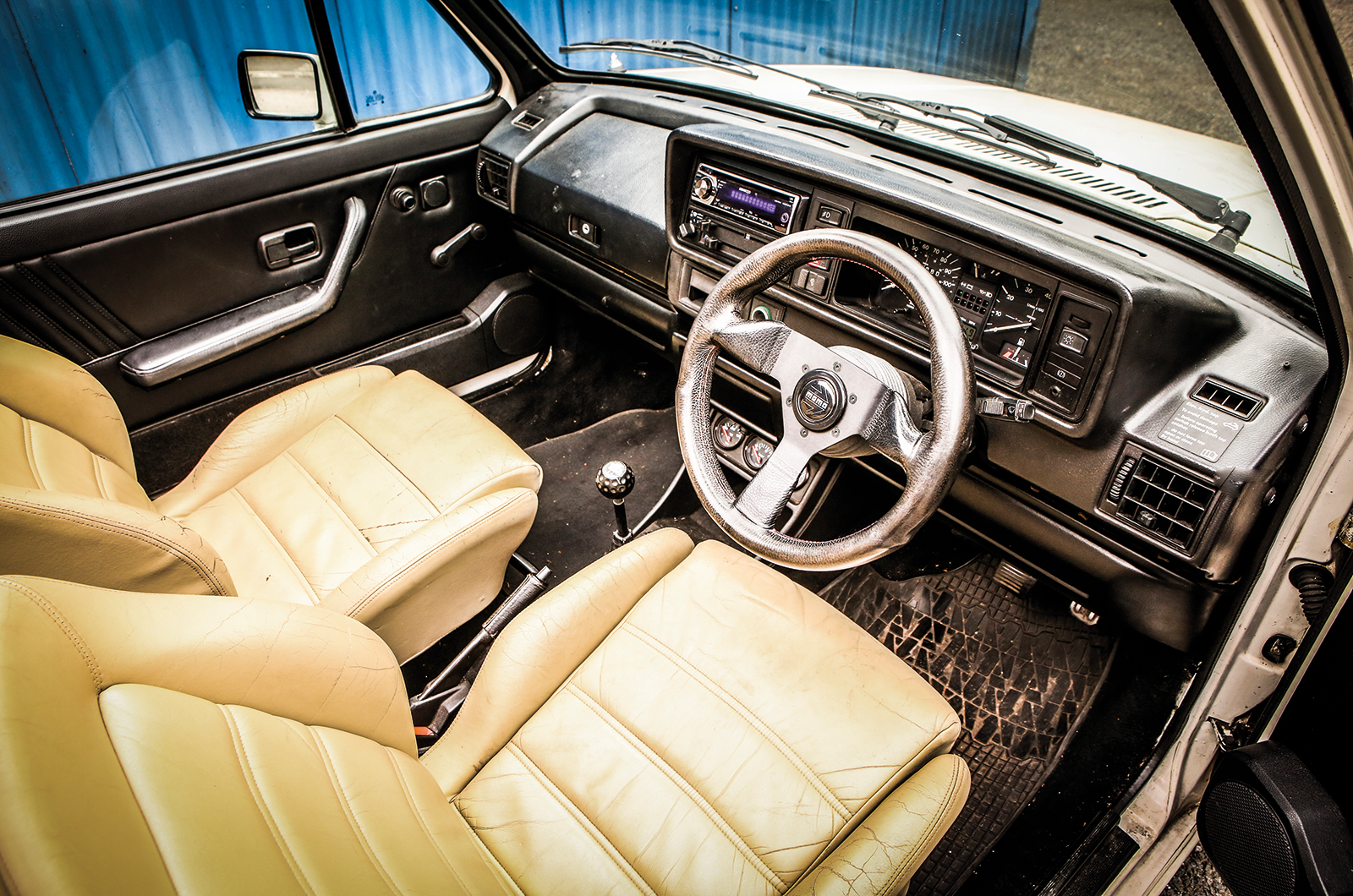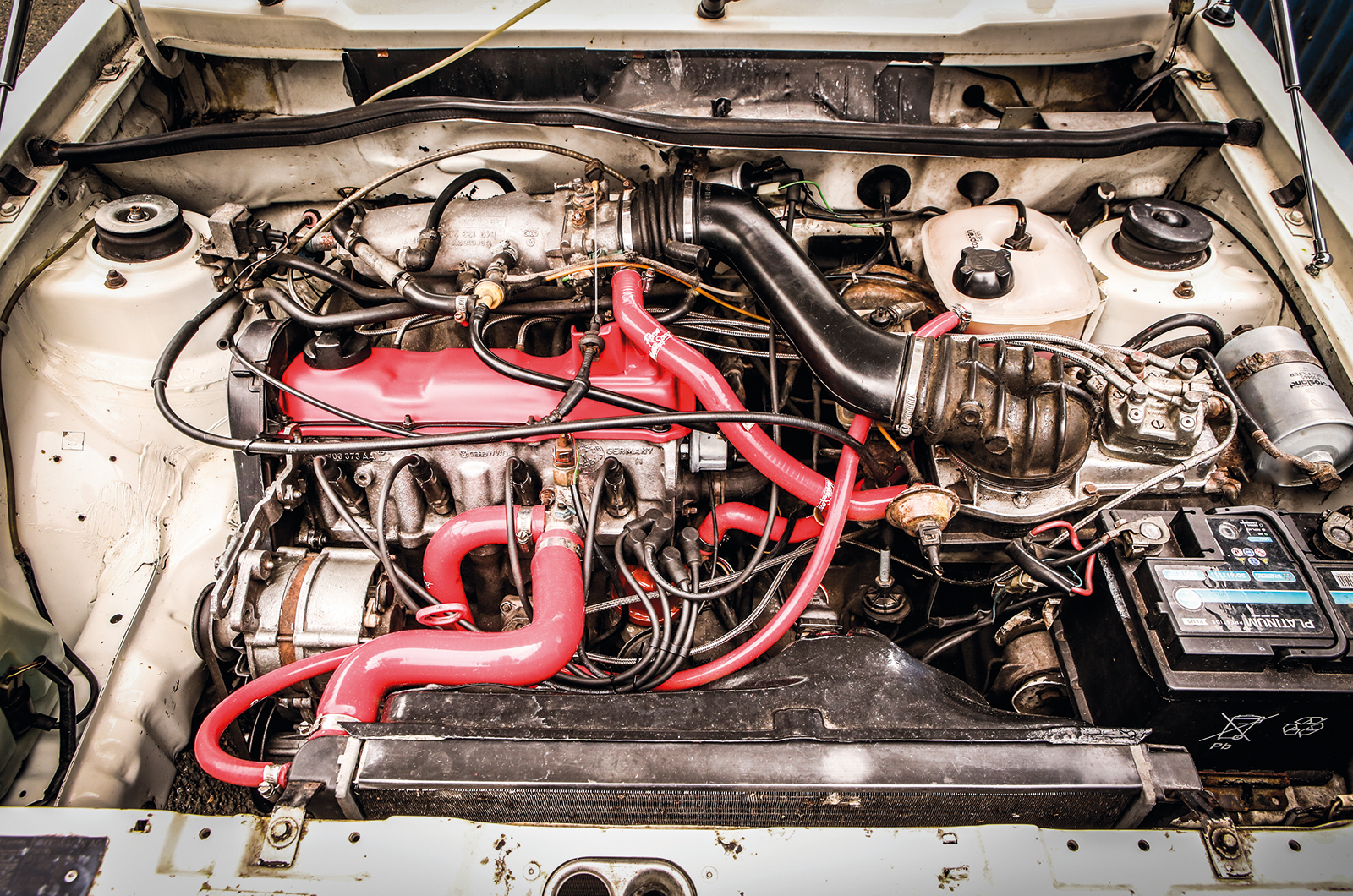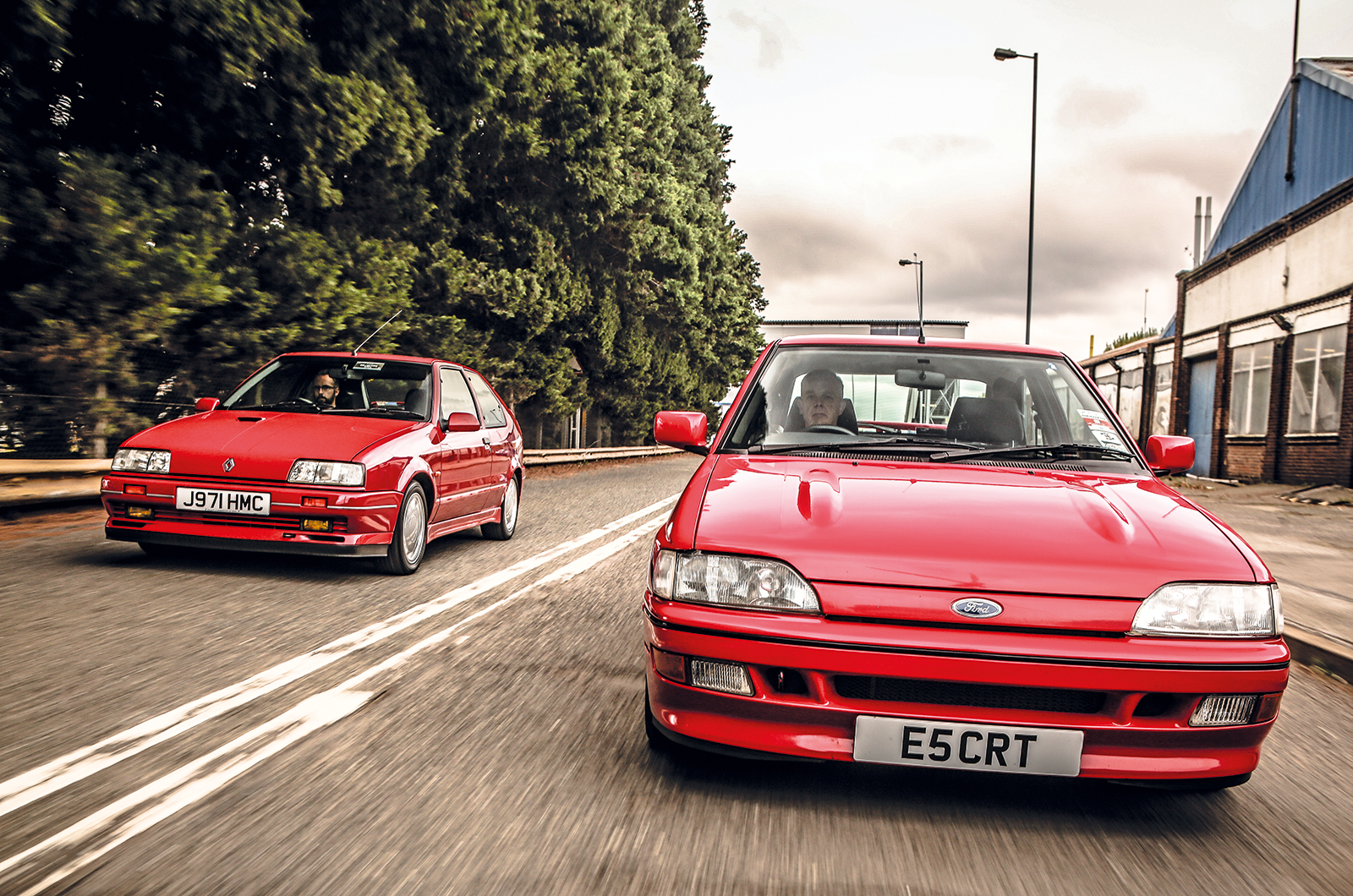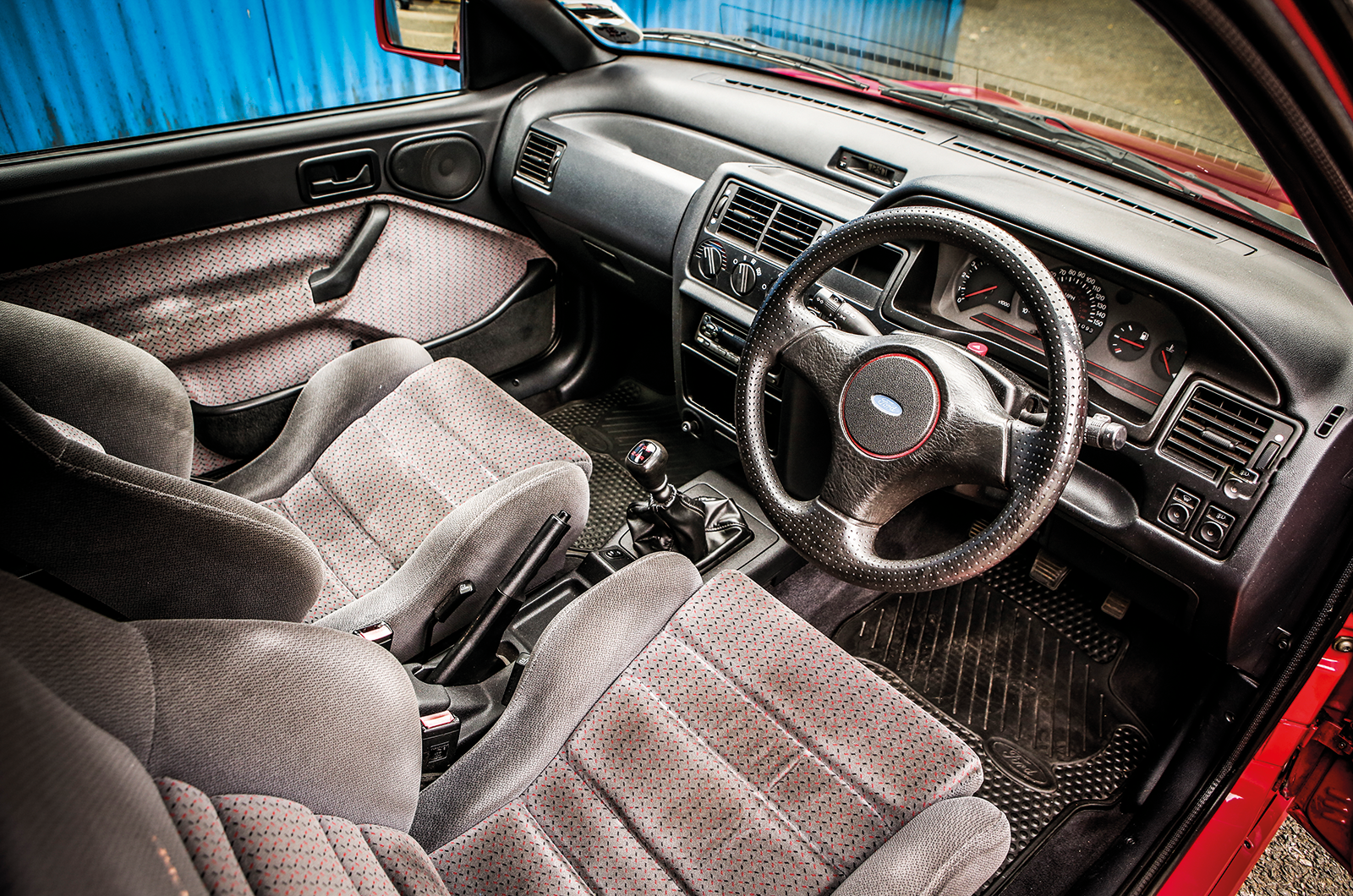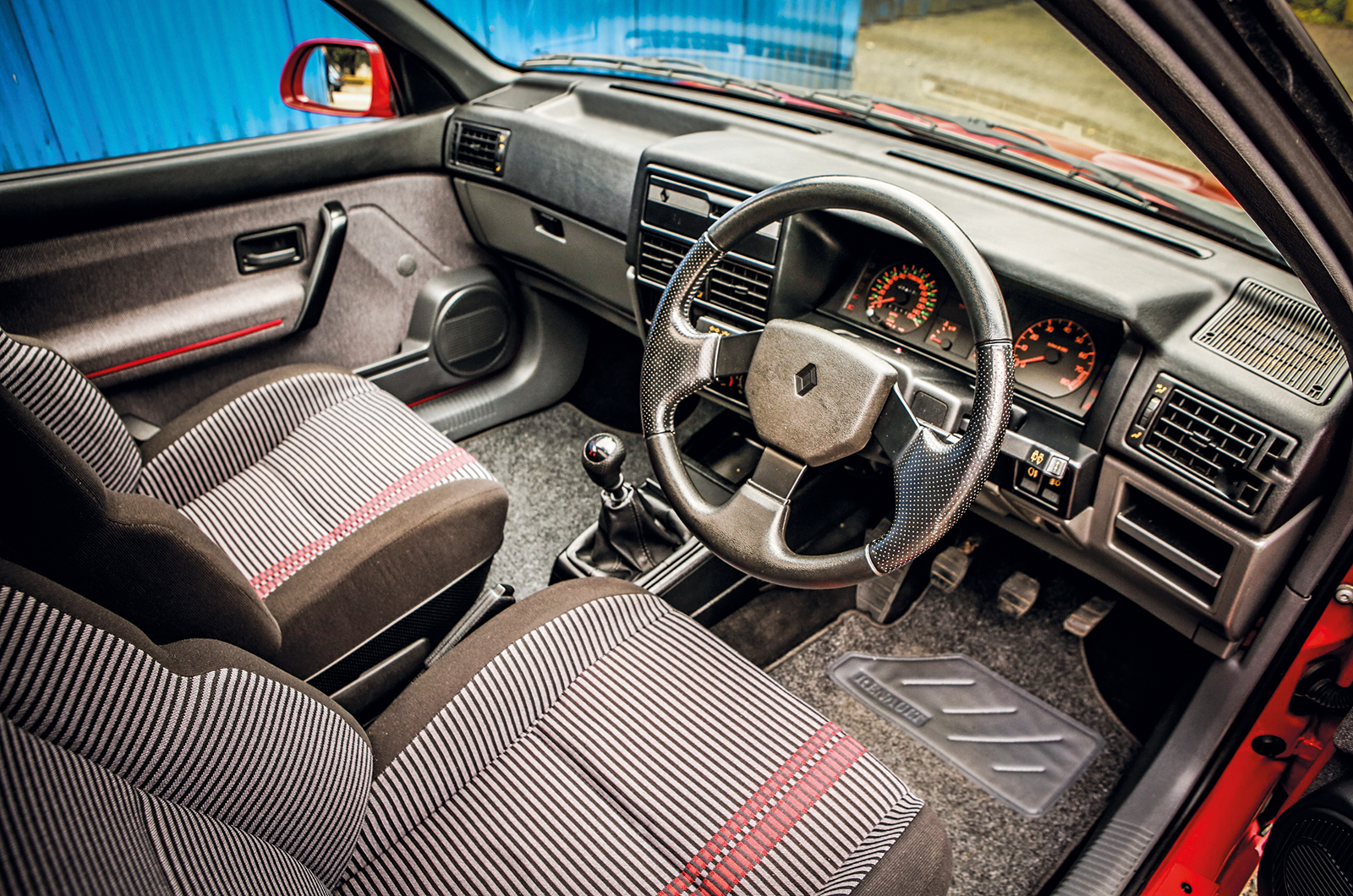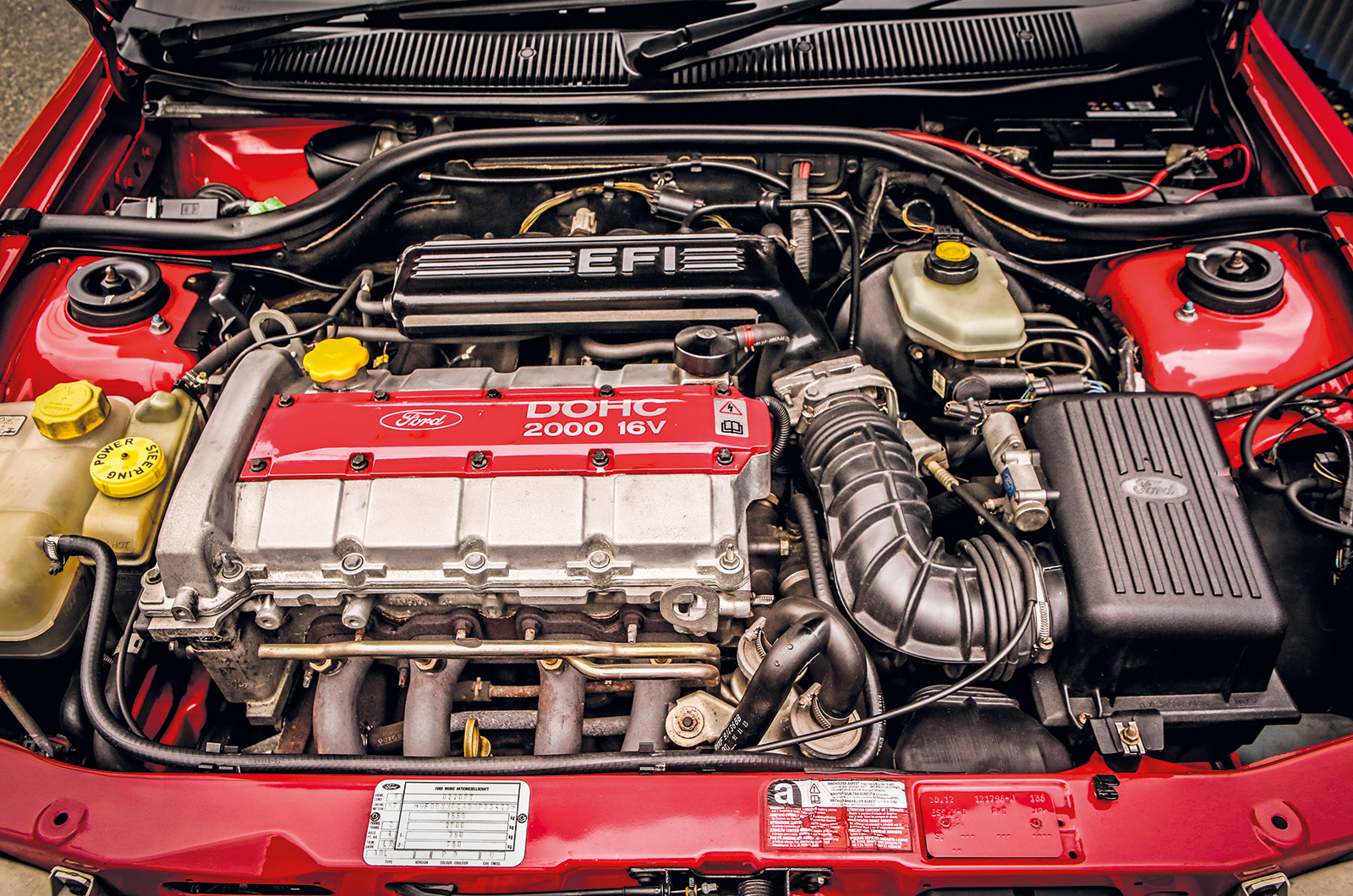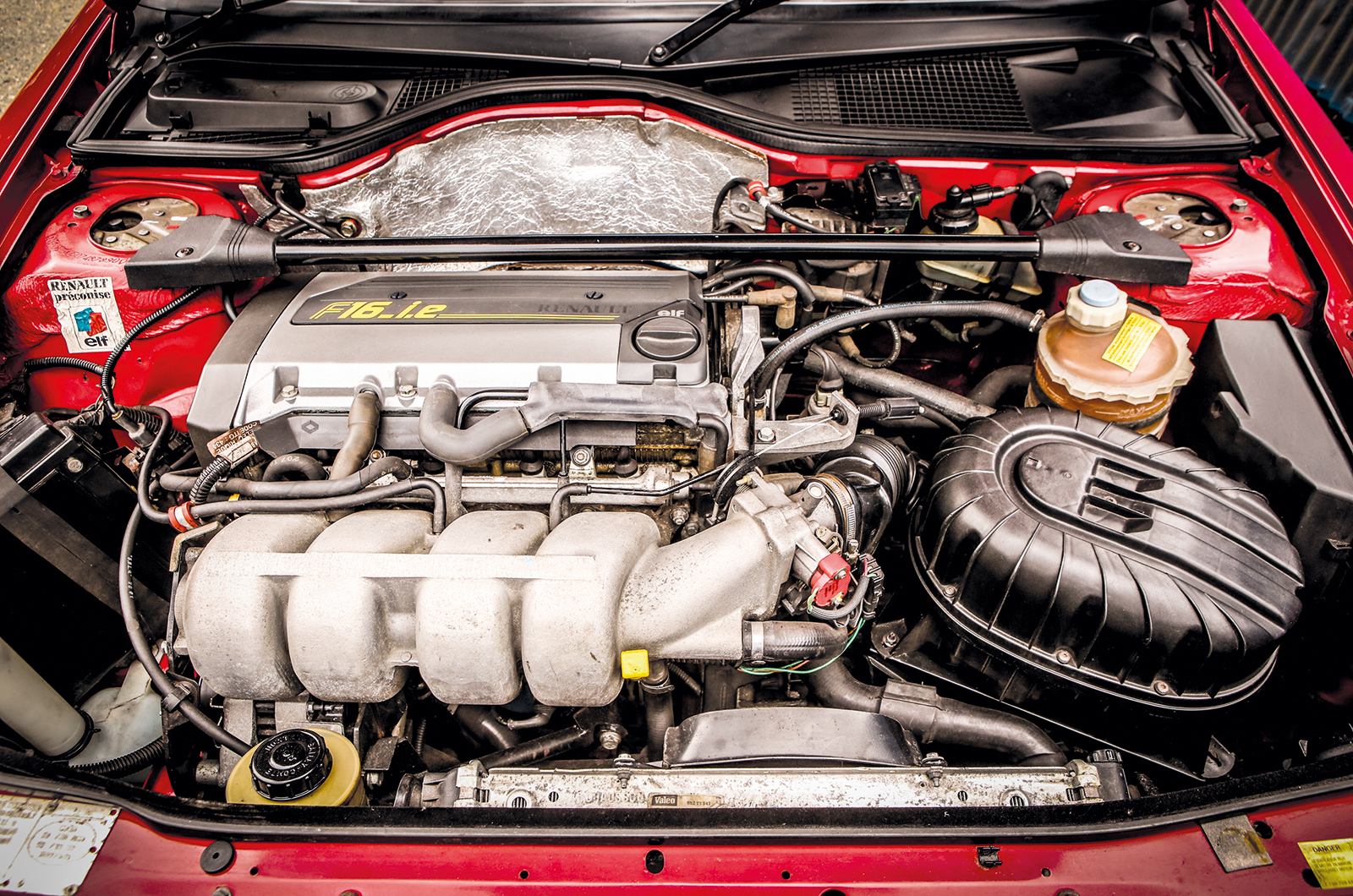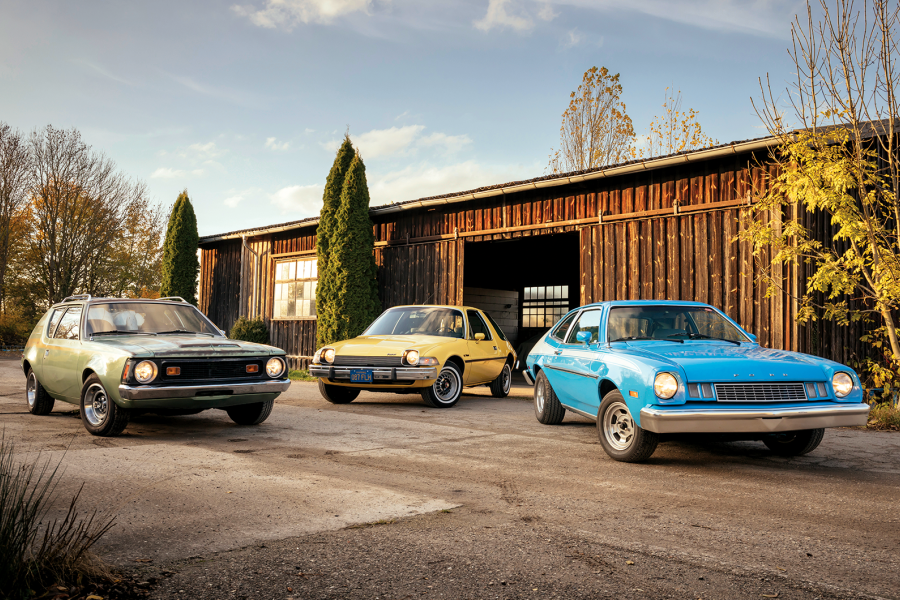At the beginning of ’86 the Ford was Britain’s best-selling car, whereas the Maestro languished down in 10th, yet it had a great deal to offer the motorist who cared less about fashion than value for money.
Barry Cooper’s Vanden Plas is one of only nine left on the road in the UK and, though the level of equipment is undoubtedly high, it sadly lacks the infamous ‘talking dashboard’ that issued orders to drivers of the early versions.
By the standards of the day, both the Ford and the Austin benefit from tasteful interior décor, the Escort favouring a low-key approach while the more overtly traditional Maestro seems primed for a brisk but respectable spin to the rotary club.
In contrast, the Escort looks genuinely sharp and conveys a sense of attainable luxury. The Ford flatters the owner’s self esteem with its contemporary air and that ‘Durham and Crushed Velour’ upholstery.
As for the Maestro, it initially appeared suited to Sunday motoring but its performance, particularly from June ’84 with the S-series engine, belied its looks; a Q-car for the Terry and June generation, perhaps?
A punchy 1.3-litre ‘four’ was available from launch on the Escort, and while the Maestro’s S-series is much larger, it musters just 16bhp more
FACTFILE
FORD ESCORT 1.3 GHIA
Sold/no built 1980-’86/1,857,000 (all MkIIIs) • Construction steel monocoque • Engine iron-block, alloy-head, sohc 1295cc ‘four’ • Max power 69bhp @ 6000rpm • Max torque 74lb ft @ 3500rpm • Transmission four-speed manual, FWD • Suspension independent, at front by MacPherson struts and anti-roll bar rear MacPherson struts, transverse and longitudinal links • Steering rack and pinion • Brakes discs front, drums rear • Length 13ft 4in (4059mm) • Width 5ft 21/2in (1588mm) • Height 4ft 41/2in (1336mm) • Wheelbase 7ft 101/2in (2400mm) • Weight 2024lb (920kg) • 0-60mph 14 secs • Top speed 96mph • Mpg 36.7 • Price new £4876 • Price now £4000
AUSTIN MAESTRO VANDEN PLAS
Sold/no built 1982-’94/605,411 (all Maestros) • Construction steel monocoque • Engine all-iron, sohc 1598cc ‘four’ • Max power 85bhp @ 5600rpm • Max torque 97lb ft @ 3500rpm • Transmission five-speed manual, FWD • Suspension: front independent, by MacPherson struts and anti-roll bar rear trailing arms, transverse torsion beam and coil springs • Steering rack and pinion • Brakes discs front, drums rear • Length 13ft 31/2in (4051mm) • Width 5ft 61/2in (1689mm) • Height 4ft 81/2in (1435mm) • Wheelbase 8ft 3in (2515mm) • Weight 2174lb (986kg) • 0-60mph 10.5 secs • Top speed 104mph • Mpg 32.3 • Price new £6775 (1983) • Price now £4000
Mk4 CABRIOLET vs VOLKSWAGEN GOLF
The 1980s brought about a revival of the convertible, an automotive idiom that many observers believed would be doomed by the end of the previous decade.
In the early 1970s, there were rumours that impending US safety legislation would outlaw soft-tops altogether; thus, the launch of the Volkswagen Golf Cabriolet in 1979 marked the return of a once-familiar genre – the open-air version of a family car – and was also perfectly timed for the MGB owner who now required a back seat.
The Cabriolet was constructed by Karmann of Innsbruck, with VW supplying the components, and while the standard Golf was updated as the Mk2 in 1984, the convertible retained the Mk1 body until April 1993.
Later models were given ‘Clipper’ colour-coded body panels that resulted in a reasonably svelte-looking Golf – just right for transporting its owner to a ‘Power Breakfast’ at Canary Wharf.
Figure-hugging chairs for sportiest Escort drop-top (left), while the GTI’s Cubist interior marks it out as a Volkswagen
Alex Wilkinson modestly describes his splendid 1991 GTI as: “Not perfect, but still standard. I bought it in 2015, at which time it had been sitting in a field for five years. I got it running and through an MoT, and I’m slowly getting the imperfections sorted.”
With its 15in BBS crossspoke alloys and hide trim, the VW conveys that ‘Croydon’s answer to the Miami Vice’ look, especially with its electrically powered roof.
Only the most awe-inspiring of ’80s Escorts could hope to compete with the Golf – and Barry Woodward owns just such a car. Any Mk4 XR3i Cabriolet in original condition is now a rare sight, but this example in Flambeau Red over Moonstone Blue is positively decadent.
As with the Volkswagen, the Escort’s body was devised by Karmann, and when it was given its debut in 1983 it was the first official Ford drophead since the demise of the Consul/Zephyr/Zodiac MkII. The elaborate work involved in strengthening the floorpan resulted in a price increase of around 25%, so it was only available in Ghia or XR guise yet, by the late ’80s, the Escort Mk4 was the best-selling convertible in the UK.
Whether you would opt for a Ford rather than the Volkswagen would probably have been less to do with the price factor and more to do with your own vision of summer motoring.
The latter does suffer from a hood that looks awkward in comparison with the XR3i, but any Golf enthusiast will be more enthused about its chassis, its steering and its sheer quality.
“The engine is just so smooth and because the Golf is such a lightweight car it handles so well,” says Wilkinson. Its rival, meanwhile, seems to be a slightly more approachable car, one that blends an exceptionally well-devised top into a sporting Ford that genuinely could be used every day.
“The acceleration is quick,” says Woodward, “but its nicest aspect is that it takes you back to driving in the 1980s.” It might only be 30 years old, but nostalgia really is what it used to be.
The Ford’s injected 1.6-litre CVH ‘four’ (left) musters 104bhp, but the GTI swiftly got an upgrade to a torquier 1.8
FACTFILE
FORD ESCORT XR3i CABRIOLET
Sold/no built 1986-’90/1,885,000 (all Mk4s) • Construction steel monocoque • Engine iron-block, alloy-head, sohc 1597cc ‘four’ • Max power 104bhp @ 6000rpm • Max torque 102lb ft @ 5500rpm • Transmission five-speed manual, FWD • Suspension independent, at front by MacPherson struts and anti-roll bar rear MacPherson struts, coil springs, transverse and longitudinal links • Steering rack and pinion • Brakes discs front, drums rear • Length 13ft 4in (4064mm) • Width 5ft 41/2in (1638mm) • Height 4ft 6in (1371mm) • Wheelbase 7ft 101/2in (2400mm) • Weight 2137lb (980kg) • 0-60mph 9.8 secs • Top speed 117mph • Mpg 35.9 • Price new £11,584 • Price now £8000
VW GOLF GTI CABRIOLET
Sold/no built 1980-’93/400,871 (all cabrios) • Construction steel monocoque • Engine iron-block, alloy-head, sohc 1781cc ‘four’ • Max power 112bhp @ 5800rpm • Max torque 112lb ft @ 3800rpm • Transmission five-speed manual, FWD • Suspension independent, at front by MacPherson struts and anti-roll bar rear torsion beam, trailing arms and anti-roll bar • Steering rack and pinion • Brakes discs front, drums rear • Length 12ft 6in (3815mm) • Width 5ft 4in (1630mm) • Height 4ft 71/2in (1412mm) • Wheelbase 7ft 101/2in (2400mm) • Weight 2128lb (965kg) • 0-60mph 10 secs • Top speed 107mph • Mpg 36.7 • Price new £12,166 • Price now £6000
Mk5 RS2000 vs RENAULT 19
The phrase ‘there are few historical periods more remote than the recent past’ may now be something of a cliché, but this doesn’t mean that it no longer holds true. To see the bright red Escort RS2000 and Renault 19 16v patrolling the mean streets of Dagenham is to recall a lost era of ‘Cyber Cafes’ and the days when Have I Got News for You was still funny.
When the fifth-generation Escort took a bow in September 1990, it did not meet with universal approval. Motorists complained about its torsion-bar rear suspension, how bland it looked in comparison with the outgoing Mk4 and, worst of all, that it seemed to be built down to a price.
The RS2000 that arrived two years later was more than simply a sporting Escort in the great tradition: it also spearheaded a revitalisation of the Mk5’s image.
Under the bulging bonnet lay a Sierra-derived twin-cam, 16-valve engine with EEC IV electronic management, while inside there were grippy Recaro seats – essential for any early-’90s enthusiast.
Velour Recaros and three-spoke wheel add a sporting edge to the Ford’s bland cabin, but the Renault’s interior feels typically flimsy
Graham Marshall’s RS2000 is a genuine one-family-owned car. “My father bought it in 1992,” he explains. “When he passed away in 1994 it went to my mother, and thereafter to me.” As with the Mk1, the RS2000 is unusual in that it is all-original.
“So many have been modified or raided for parts,” says Marshall of the now-rare sporting model. “I love the handling, too – it really does feel as though it is on rails!”
Appearing opposite the Ford is a car that remains one of the most underrated hot hatchbacks of its era. The Renault 19 16v blends the hottest Clio’s powerplant with styling that sits just on the right side of the flamboyance/vulgarity divide.
The 19 had been in production for two years when La Régie unveiled the 16v in late 1990, during which time it had not exactly earned a reputation for charisma.
But with the new flagship, Renault dealers could now offer, to quote Car magazine (January 1991), a car that felt ‘special all the time’.
This is an opinion shared by Andrew Waller, owner of the survivor featured here: “My 19 is a 1991 Phase 1 model, so it has the ‘bodykit’ look as opposed to the more subtle Phase 2 – although the car is completely stock. It is just such a good Renault to drive and the engine is so flexible.”
Production of the 19 ceased in France in ’96 and the final Mk5 was built the following year. The Escort name was last seen on a new Ford in 2004, by which time it had come to symbolise an entire market sector.
The spicy RS2000 makes a grand conclusion to our trip to Dagenham; it’s an Escort in the true spirit of the 1968 Twin Cam.
For me, however, the car of the day has to be the Mk1. The engine note alone is enough to return those of us of a certain age to another world – and another time.
Sweet-spinning 16-valve lies at the heart of the RS2000’s appeal (left); the Renault’s 16-valve motor formed the basis of a sporting dynasty
FACTFILE
FORD ESCORT RS2000
Sold/no built 1991-’97/c6000 • Construction steel monocoque • Engine iron-block, alloy-head, dohc 1998cc ‘four’ • Max power 150bhp @ 6000rpm • Max torque 140lb ft @ 4500rpm • Transmission five-speed manual, FWD • Suspension independent, at front by MacPherson struts and anti-roll bar rear trailing arms, torsion bars, coil springs and anti-roll bar • Steering rack and pinion • Brakes discs • Length 13ft 3in (4040mm) • Width 5ft 61/2in (1692mm) • Height 4ft 7in (1397mm) • Wheelbase 8ft 31/2in (2525mm) • Weight 2478lb (1124kg) • 0-60mph 8.5 secs • Top speed 130mph • Mpg 28.6 • Price new £15,995 • Price now £7000
RENAULT 19 16v
Sold/no built 1986-’96/na • Construction steel monocoque • Engine iron-block, alloy-head, dohc 1764cc ‘four’ • Max power 138bhp @ 6500rpm • Max torque 119lb ft @ 4250rpm • Transmission five-speed manual, FWD • Suspension independent, at front by MacPherson struts and anti-roll bar rear trailing arms and torsion bars • Steering rack and pinion • Brakes discs • Length 13ft 71/2in (4153mm) • Width 5ft 6in (1676mm) • Height 4ft 71/2in (1410mm) • Wheelbase 8ft 4in (2540mm) • Weight 2315lb (1060kg) • 0-60mph 7.7 secs • Top speed 127mph • Mpg 37.2 • Price new £13,635 • Price now £3000
Images: Tony Baker
Thanks to Ford Heritage; British Motor Museum; Magic Spells Brewery; Affordable Classics; Vauxhall Heritage; Ford RS Owners’ Club; Maestro & Montego OC; Mk1 Golf OC; Renault OC; XROC; Sporting Escort OC; Vanden Plas OC
READ MORE
Every Car of the Year winner: how many do you remember?
9 British classics built for export
Meet the British collector obsessed with Eastern Bloc cars
Andrew Roberts
Andrew is a long-time contributor to Classic & Sports Car
